This note discussed the fundamental principles of communication between neurons in the brain.
Neuronal Structure and Communication Theories:
- Neurons are the processing units of the brain, consisting of dendrites, cell body, axons, and nerve endings.
- Two main theories exist regarding neuronal communication:
- Reticular theory (Golgi): Neurons form a continuous network, connected directly.
- Neuron doctrine (Cajal): Neurons are structurally independent, interacting through synapses (supported by electron microscopy).
Types of Neurons:
-
Sensory neurons: Convert external stimuli to electrical signals.
-
Interneurons: Process and relay information within the brain.
-
Motor neurons: Convert processed signals into muscle/gland movements.
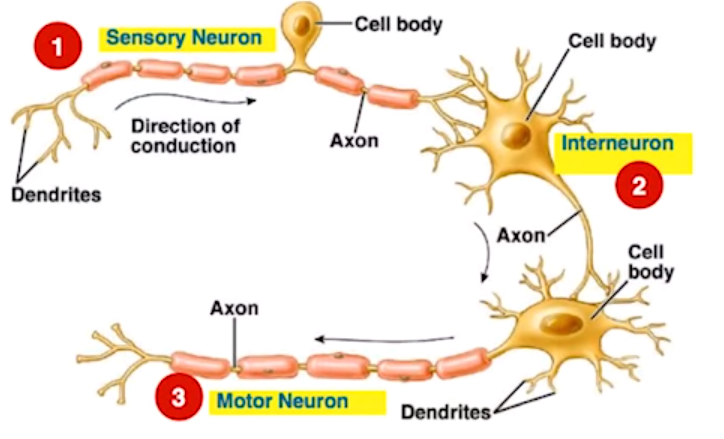 Electrical and Chemical Communication:
Electrical and Chemical Communication: -
Neurons have ion channels and pumps maintaining a resting potential across the membrane.
-
Communication occurs at synapses, where electrical signals are converted to chemical signals.
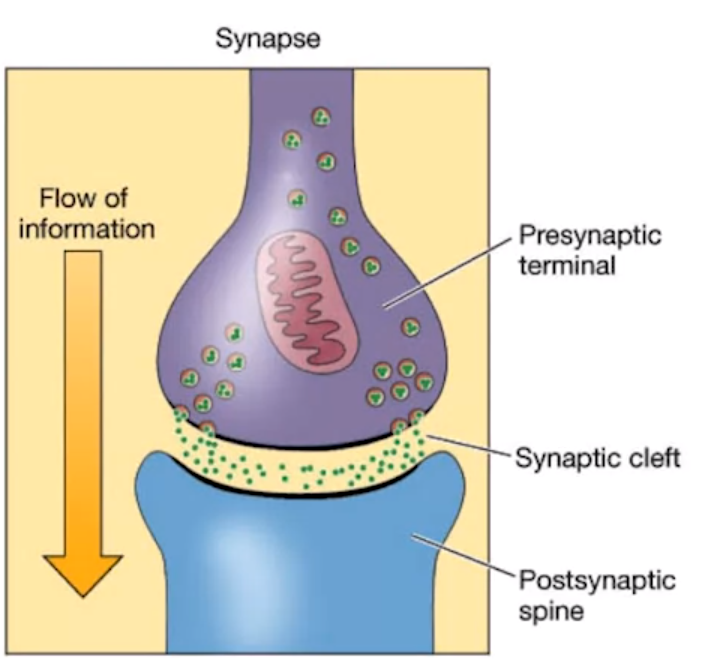
-
Communication Mechanisms:
- Neurons communicate through synapses, the connection points between nerve endings and dendrites.
- Communication involves both electrical and chemical signals:
- Electrical signals:
- Established by ion channels and pumps, creating a resting state potential.
- Action potentials (electrochemical pulses) travel along axons.
- Chemical signals:
- Neurotransmitters are released from synaptic vesicles at the presynaptic terminal.
- Neurotransmitters bind to receptors on the postsynaptic membrane, influencing its potential.
- Electrical signals:
-
Synaptic Transmission:
- Calcium influx triggers synaptic vesicle fusion with the presynaptic membrane.
- Neurotransmitters are released into the synaptic cleft.
- Neurotransmitters bind to postsynaptic receptors, opening or closing ion channels.
- Influx or efflux of ions alters the postsynaptic membrane potential.
- Sufficient depolarization triggers an action potential in the postsynaptic neuron.
- Used synaptic vesicles are retrieved and recycled.
-
Postsynaptic Effects:
- Excitatory stimulation (EPSPs) depolarize the membrane, increasing the likelihood of action potential generation.
- Inhibitory stimulation hyperpolarizes the membrane, making it harder to reach the action potential threshold.
- Summation of EPSPs can be necessary to reach the threshold.
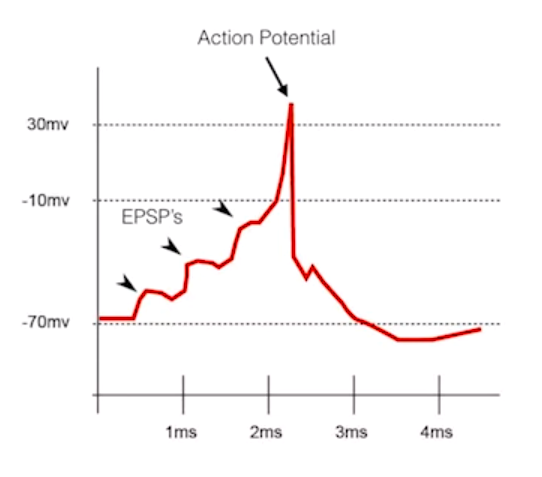
[!Explore More] https://www.youtube.com/watch?v=KLyrTOPLmbM https://www.youtube.com/watch?v=oa6rvUJlg7o
Recording Neuronal Activity:
-
Electrodes placed inside or outside neurons measure voltage changes.
-
Intracellular recordings reflect voltage changes within the cell.
-
Extracellular recordings capture local field potentials due to activity in the surrounding neuronal environment.
-
Local field potentials (LFPs): Extracellular recordings reflect activity of a local neuronal network.
-
Importance of LFPs: Understanding the basis of MRI signal generation.
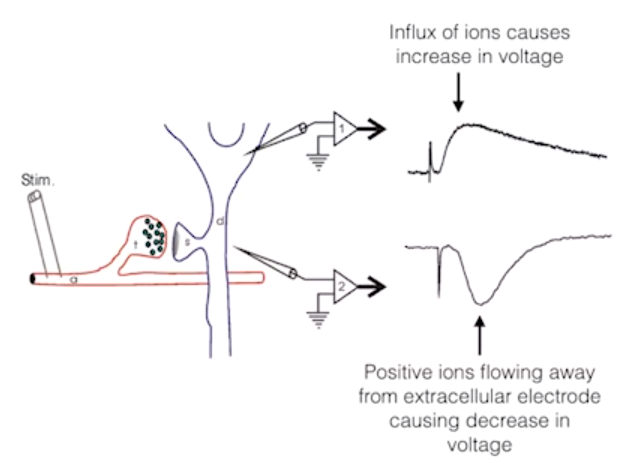 Key Points:
Key Points: -
Neurons communicate through a combination of electrical and chemical signals.
-
Synapses are the primary sites of communication between neurons.
-
Different types of neurons have specialized functions.
-
Local field potentials are crucial for understanding brain function (e.g., MRI).
There are wide variety of neurotransmitters with different functions (>50 identified).
Categories of Neurotransmitters
- Excitatory: Increase postsynaptic cell activity (e.g., epinephrine, norepinephrine).
- Inhibitory: Decrease postsynaptic cell activity (e.g., serotonin, GABA).
- Modulatory: Can be excitatory or inhibitory depending on context (e.g., dopamine).
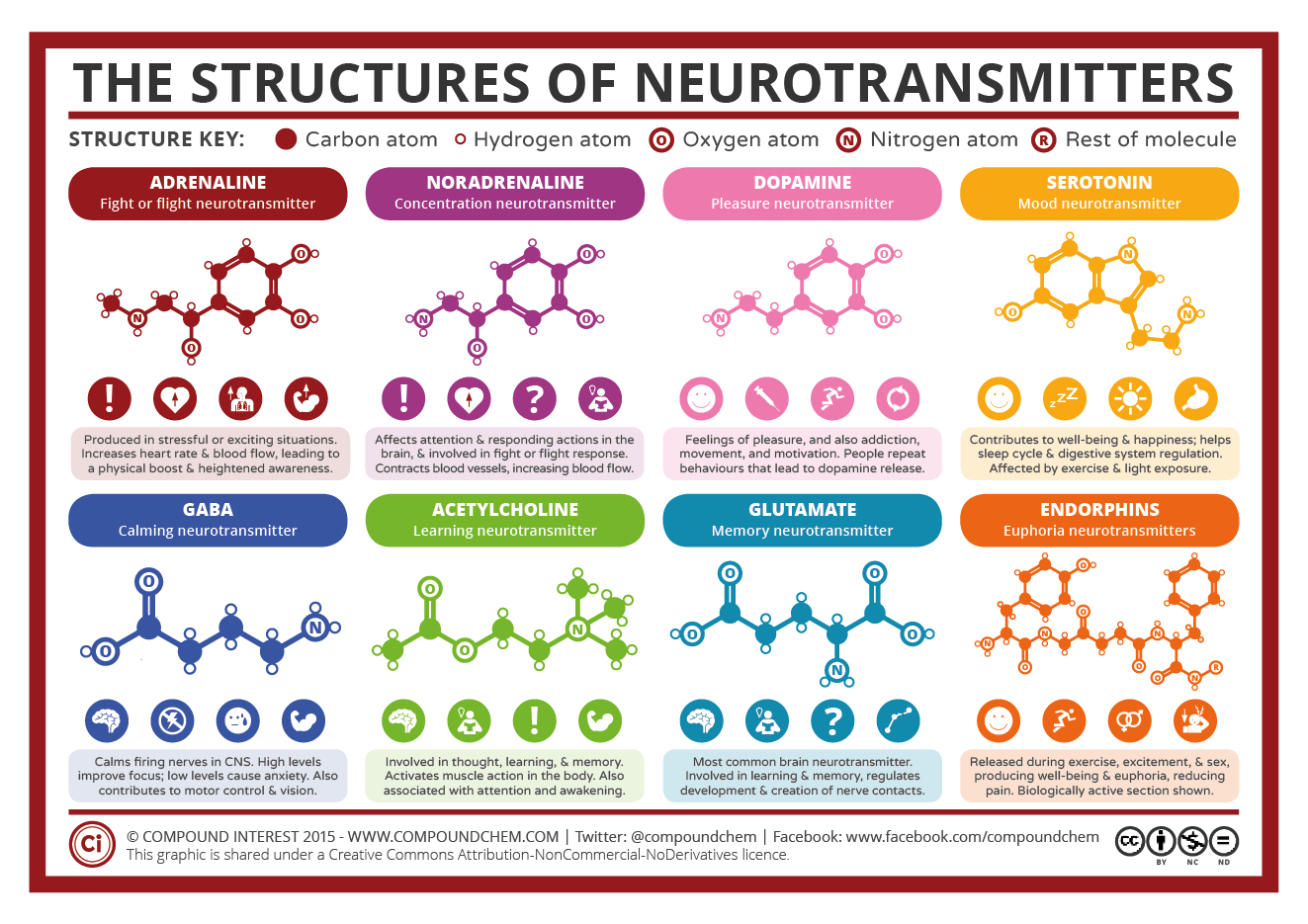
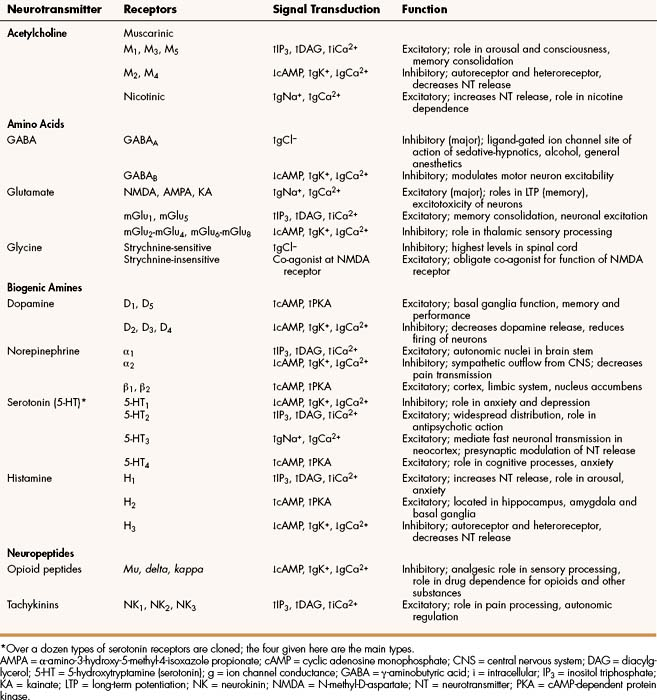
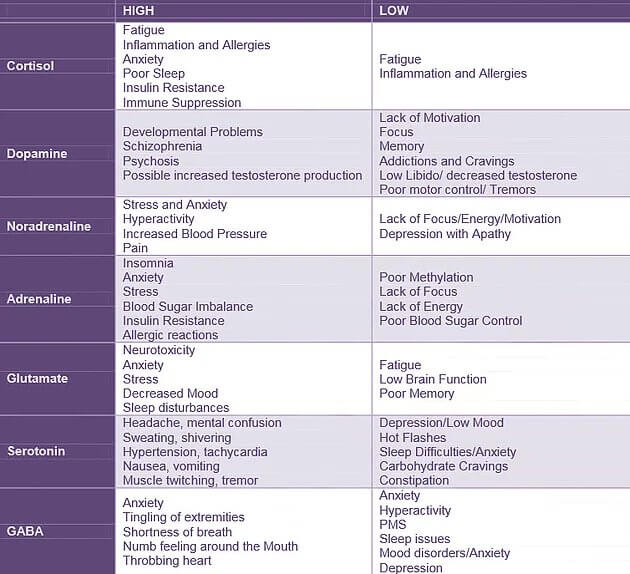
[!Explore More] https://www.verywellmind.com/what-is-a-neurotransmitter-2795394 https://www.youtube.com/watch?v=fYUpLvM5X7A https://www.nature.com/articles/s41593-022-01186-3
How Neurotransmitters Work
- Neurotransmitters bind to receptors on the postsynaptic cell.
- Binding can open or close ion channels, affecting cell firing.
- Glutamate example:
- AMPA receptors: allow sodium influx for excitation.
- NMDA receptors: allow calcium influx for learning and memory (Long-Term Potentiation).
-
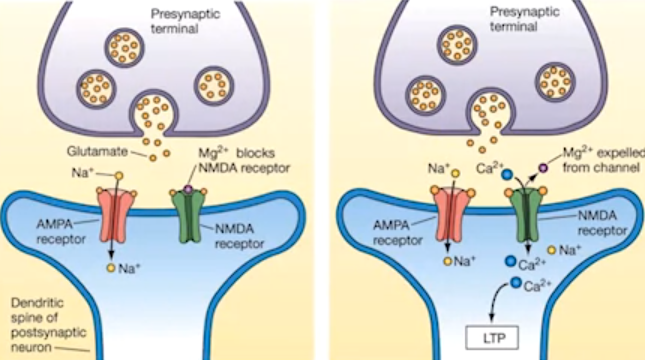
- Drugs can mimic or block neurotransmitters.
- Agonists: open channels (natural or artificial).
- Antagonists: block channels (competitive or noncompetitive).
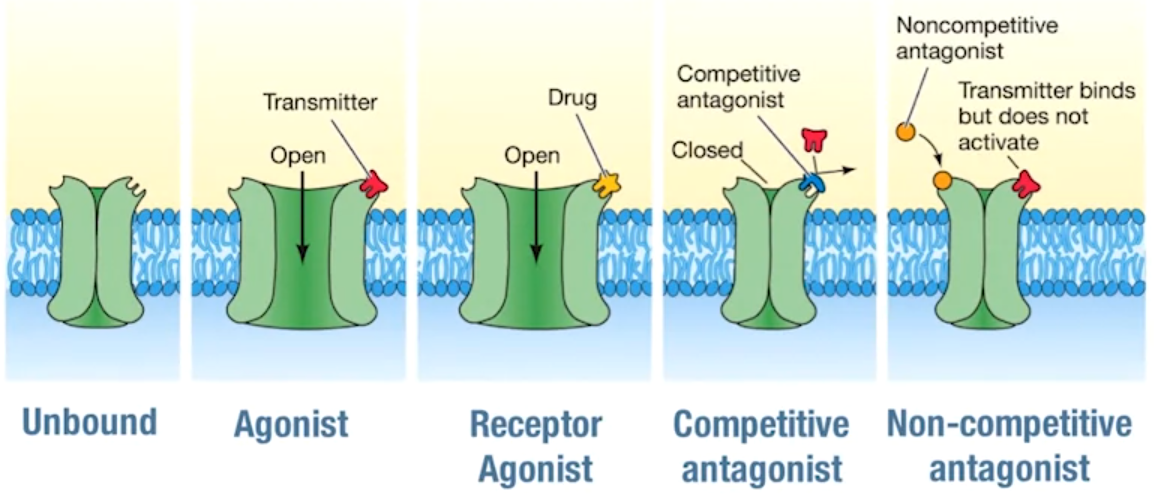 Communication with the Body
Communication with the Body
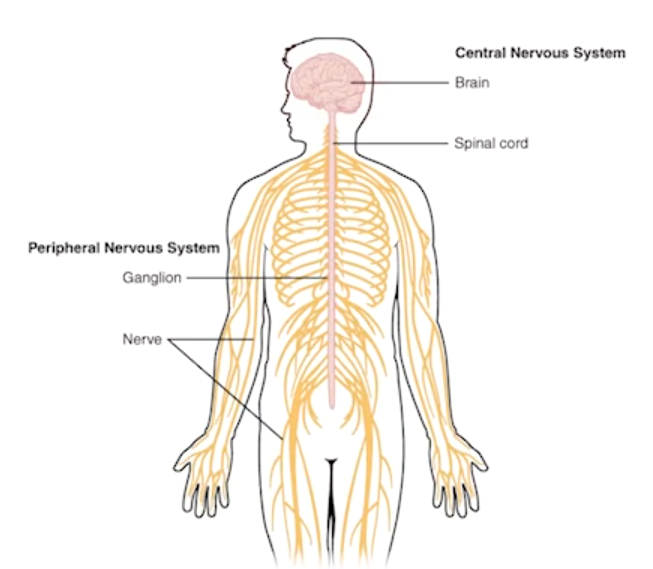
- Direct Innervation:
- Cranial nerves: Extend from brainstem to head and upper body.
- Cortical spinal tracts: Carry sensory and motor information between brain and body via spinal cord.
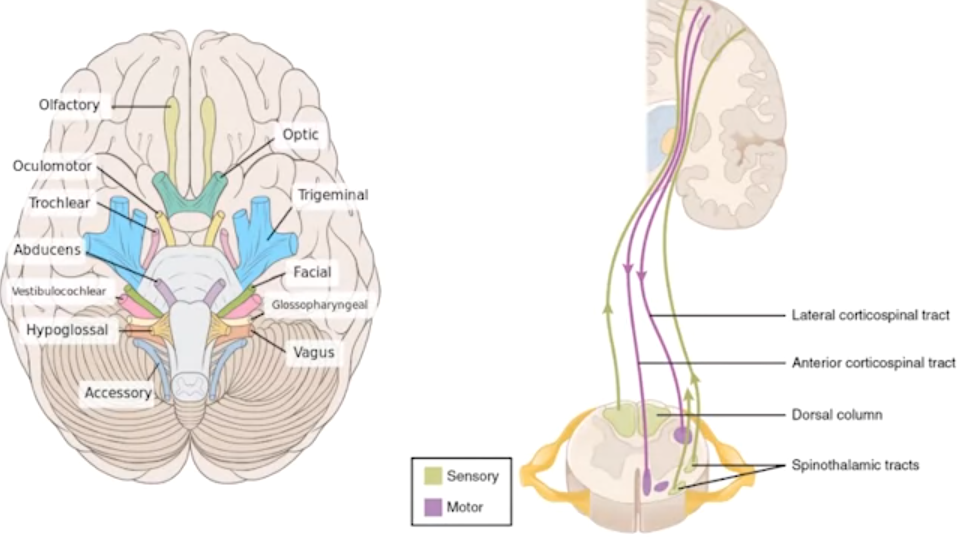
- Hormonal Communication:
- Endocrine system: Network of glands releasing hormones.
- Regulates physiological and behavioral functions (e.g., heart rate, mood).
- Produced by glands in the endocrine system.
- Travel through blood to target organs and influence physiological processes.
- Examples: Adrenaline, various hormones from hypothalamus, pituitary, and pineal glands.
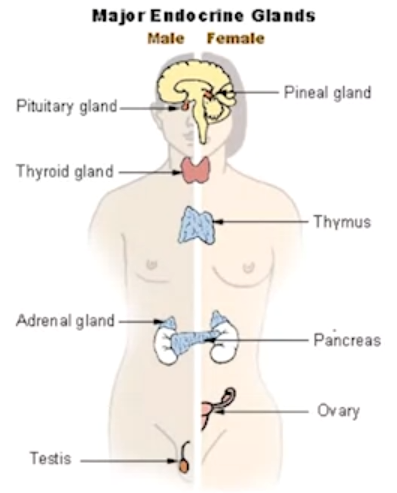
Example: Adrenaline and the Stress Response
- Adrenaline released by adrenal glands in response to danger.
- Adrenaline activates sympathetic nervous system.
- Sympathetic nervous system prepares body for “fight or flight” response (increased heart rate, respiration, etc.).
- Adrenaline indirectly influences brain by binding to vagus nerve, releasing glutamate, and impacting memory regions.
[!Explore More]
https://www.youtube.com/watch?v=NRRBVMFTSWI https://www.youtube.com/watch?v=DPWEhl7gbu4
Blood-Brain Barrier
- Protects the brain from toxins and bacteria.
- Only allows specific molecules, like oxygen and glucose, to pass through.
- Certain brain regions not protected by the blood-brain barrier produce hormones.
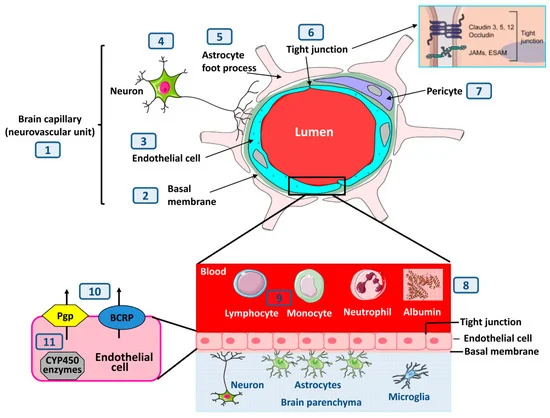
[!Explore More]
https://youtu.be/noWwbvmdhL0?si=x2WTw1EEwT2smGvs https://www.youtube.com/watch?v=sKG81gJuTLM https://www.youtube.com/watch?v=e9sN9gOEdG4
Bidirectional Communication
- Hormones can also send signals back to the brain from other organs.
- Example: Adrenaline triggers the “fight-or-flight” response via the nervous system.
IV. Conclusion
- Brain uses a complex interplay of neurotransmitters and hormones to communicate:
- Within itself
- With the rest of the body
- Receives feedback from the body